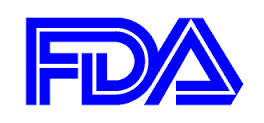FDA Issues Proposed Rule to Address Data Gaps for Certain Active Ingredients in Healthcare Antiseptics?

FDA has issued a proposed rule requesting additional scientific data to support the safety and effectiveness of certain active ingredients used in health care antiseptics marketed under the over-the-counter drug monograph.
Healthcare antiseptics are primarily used by healthcare professionals in hospitals, clinics, doctors’ offices, outpatient settings and nursing homes. They include hand washes and rubs, surgical hand scrubs and rubs (with or without water), and patient preoperative skin preparations, including pre-injection preparations. The most common active ingredients in healthcare antiseptics marketed under the over-the-counter drug monograph include alcohol and iodines. These products are different from consumer antiseptics, such as antibacterial soaps and hand sanitizer rubs, which are not part of this proposed rule.
Based on new scientific information and concerns expressed by outside scientific and medical experts on an FDA advisory committee, the agency is requesting additional scientific data to demonstrate that health care antiseptics in the over-the-counter drug monograph are generally recognized as safe and effective (GRASE) for their intended use to reduce bacteria that potentially can cause disease. The FDA’s request for more safety and effectiveness data for healthcare antiseptic active ingredients should not be taken to mean the FDA believes that these products are ineffective or unsafe.
Since the FDA began review of healthcare antiseptics in the 1970s, many things have changed, including the frequency of use of some of these products, hospital infection control practices, new technology that can detect low levels of antiseptics in the body, the FDA’s safety standards and the scientific knowledge about the impact of widespread antiseptic use.
Emerging science also suggests that for at least some healthcare antiseptic active ingredients, systemic exposure (full body exposure as shown by detection of antiseptic ingredients in the blood or urine) is higher than previously thought, and existing data raise potential concerns about the effects of repeated daily human exposure to some antiseptic active ingredients. The FDA is particularly interested in gathering additional data on the long-term safety of daily, repeated exposure to these ingredients in the healthcare setting and on the use of these products by certain populations, including pregnant and breastfeeding healthcare workers, for which topical absorption of the active ingredients may be important.
Related News
-
News Pharmaceutical industry supports COP28 health stance in joint statement
As COP28 takes place over this week in Dubai, UAE, several bodies in the pharmaceutical and health industries have come together to announce support of key movements in sustainability in the sector, and to recognise sustainability as a health issue.&nb... -
News Biden backs Cold-War measures to shore-up medical supply chains
In a recent strategy to combat rising inflation and the cost of living crisis, President Joe Biden has invoked a Cold War-era act to increase investment in a selection of medicines and supplies. -
News CPHI Podcast Series: What does the changing US Pharma market mean for industry and patients alike?
In this week's episode of the CPHI Podcast Series Lucy Chard, Digital Editor for CPHI Online is joined by James Manser to discuss the political and market changes in the US pharma field. -
News Which 10 drugs are open to price negotiation with Medicare in the USA?
The Centres for Medicare & Medicaid Services, under the Biden administration in the USA, has released a list of the 10 drugs that will be open to price negotiations as part of the new legislation under the Inflation Reduction Act (IRA). -
News 10 Major Drug Approvals So Far in 2023
Last year, 37 novel drugs were approved by the FDA, this was a high number for such a category, and covered many fields including oncology, demonstrating how promising further research is, and how it is only continuing to build. To date, there are alre... -
News Novartis agrees for copies to be made of cancer drug to reach poorer countries
Novartis signs agreement with MPP to have generics of it's leukemia drug made so that it can be more easily distributed to the world's poorer countries. -
News CPHI Podcast Series: outsourcing and manufacturing trends
Listen to the CPHI Podcast Series this June to hear Gil Roth of the PBOA speak with Digital Editor Lucy Chard about the biggest trends and topics to watch in pharma outsourcing and manufacturing at the minute. -
News New WHO health emergency guidelines expect full transparency from Big Pharma
The WHO are proposing a new set of pandemic guidelines to set out how future global health crises should be handled.
Position your company at the heart of the global Pharma industry with a CPHI Online membership
-
Your products and solutions visible to thousands of visitors within the largest Pharma marketplace
-
Generate high-quality, engaged leads for your business, all year round
-
Promote your business as the industry’s thought-leader by hosting your reports, brochures and videos within your profile
-
Your company’s profile boosted at all participating CPHI events
-
An easy-to-use platform with a detailed dashboard showing your leads and performance







